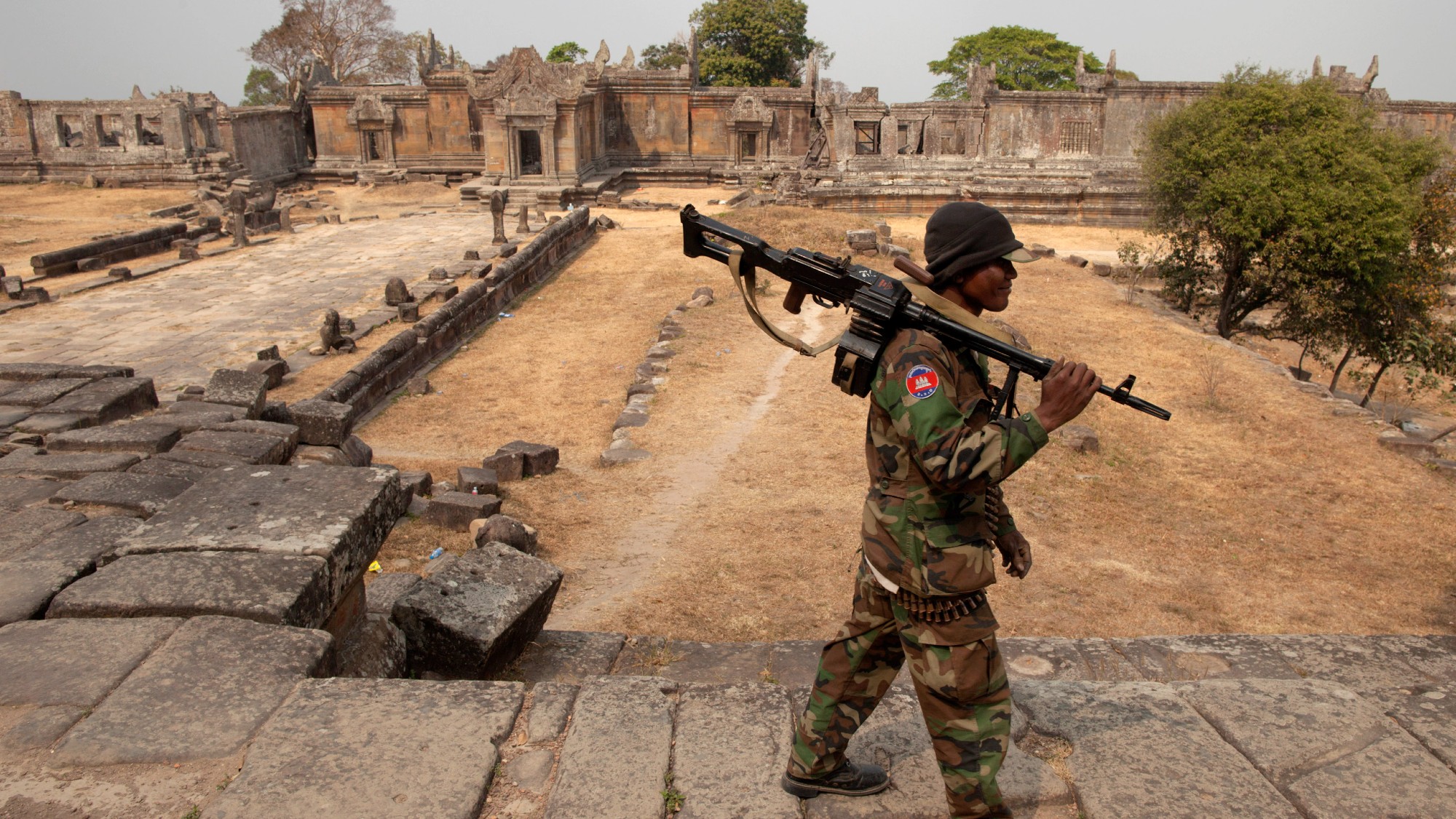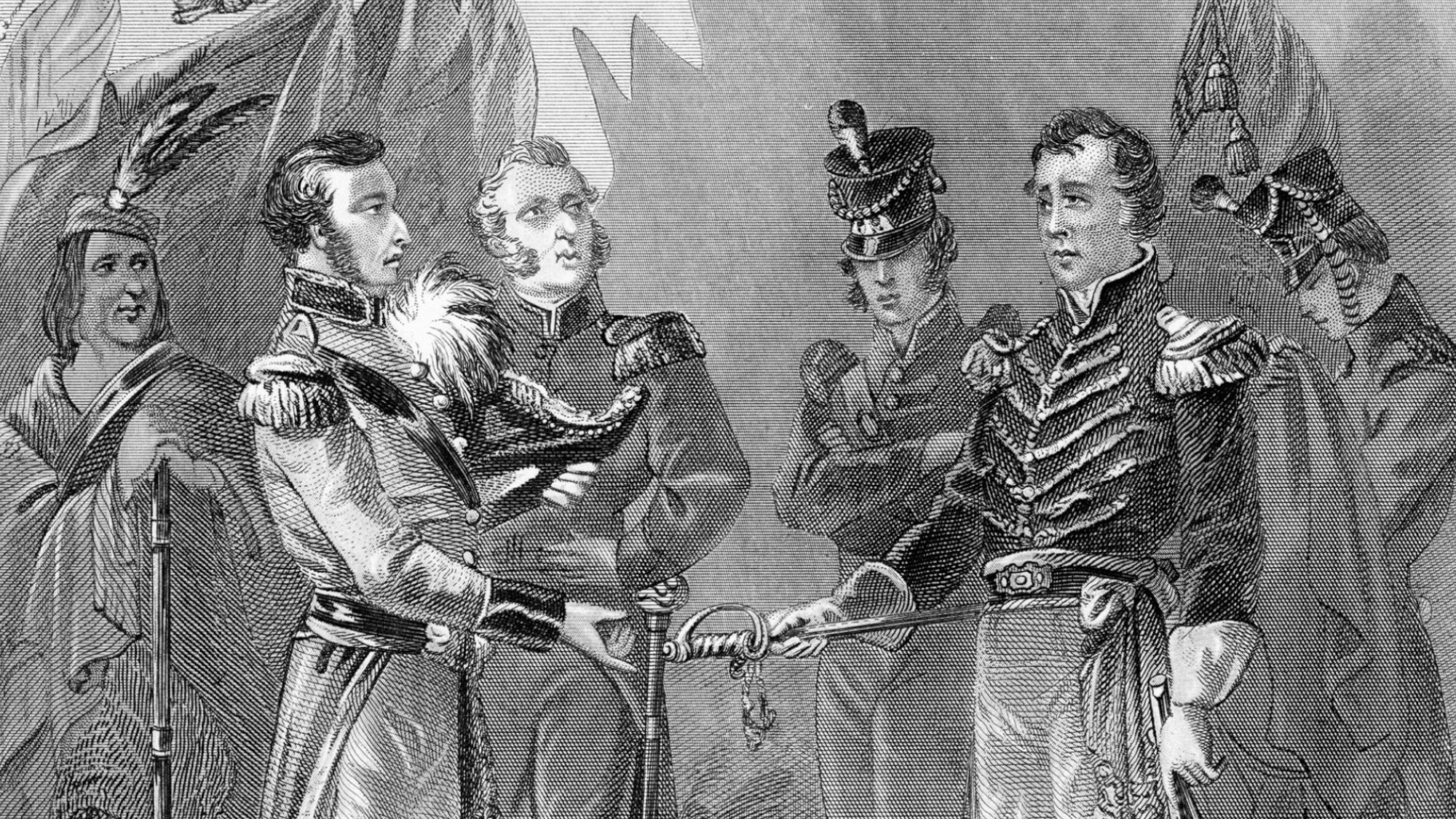What do the different coloured poppies symbolise?
Volunteers are distributing millions of poppies in the run up to Remembrance Day

As Remembrance Day approaches, citizens of the UK and other Commonwealth nations are preparing to pay tribute to fallen war heroes.
On 11 November and the days around it, red poppies start appearing on coats and jackets, in shops and at train stations. They are typically worn “in tribute” to members of the Armed Forces, with the Royal British Legion distributing around 40m poppies a year to raise funds for veterans, said The Independent.
But in recent years, there’s been a growing trend for eschewing the iconic red poppy in favour of other colourful varieties, each representing different causes and ideas.
The Week
Escape your echo chamber. Get the facts behind the news, plus analysis from multiple perspectives.

Sign up for The Week's Free Newsletters
From our morning news briefing to a weekly Good News Newsletter, get the best of The Week delivered directly to your inbox.
From our morning news briefing to a weekly Good News Newsletter, get the best of The Week delivered directly to your inbox.
So what do the different coloured poppies represent?
Red
The red paper poppy was initially adopted as a symbol for those who fought in the First World War, and was introduced by the American Legion in 1921. Today it is more commonly used in the UK, Australia, Canada and New Zealand.
The flower’s symbolism “lies in the landscapes of the First World War”, the Imperial War Museum explained. “Poppies were a common sight, especially on the Western Front.” The red flowers “flourished” on the battlefields, and in 1918 campaigners began calling for the poppy to become a symbol of remembrance.
A free daily email with the biggest news stories of the day – and the best features from TheWeek.com
White
The white poppy, on the other hand, was designed by the Co-operative Women's Guild in 1933 and adopted the following year by the Peace Pledge Union (PPU) as a symbol of anti-war and pacifist sentiment.
It is sometimes “mistaken as a generic peace symbol”, the PPU’s Campaigns and Communications Manager Symon Hill told Metro, but its symbolism is more specific. It represents “remembrance for all victims of war, a commitment to peace and a challenge to attempts to glamorise or celebrate war,” the PPU explained.
Purple
The Purple Poppy Campaign was first founded by Animal Aid, the UK’s oldest and largest animal rights group, in order to remember the millions of animals who were killed during the First World War and to honour the animals in service today. Approximately eight million horses, donkeys, and pigeons were killed in the First World War.
In 2015, Animal Aid founder Andy Smith swapped the poppies for a purple paw badge, available for purchase on their website. “Our aim was to make it clear that animals used in warfare are indeed victims, not heroes,” Smith told The Evening Standard.
The campaign was spearheaded in 2016 by Murphy’s Army, a West Yorkshire charity group for missing animals. They sell pin badges, wristbands and hand knitted purple poppies that can be worn by both animals and humans.
Black
The black poppy is most commonly associated with the remembrance of black, African, and Caribbean contributions to war efforts dating back to the 16th century.
The initiative, titled “Black Poppy Rose”, was launched in 2010 and aims to make the black poppy a nationwide symbol of remembrance.
Black poppies are intended as a symbol of “pride, honour and glory”, the organisation’s website explained, “with the hope that future generations will be inspired by these largely untold historical legacies”. The wars for which the black flowers are worn in remembrance of include the Napoleonic, Crimean and Boer Wars, as well as both World Wars.
Khadi poppy
For Remembrance Day 2018 – the 100th anniversary of the end of the First World War – Conservative Party donor Lord Jitesh Gadhia and the Royal British Legion launched the “khadi poppy”.
This design, which was the same deep red as the original poppy, replaced the current paper style and was instead crafted from khadi, a traditional hand-woven cloth from India which bears similarities to “Gandhi’s iconic clothing”, the BBC said.
The khadi poppy paid tribute to and raised awareness of the service to the British Empire of people from South Asia during the First World War.
The subcontinent suffered greatly during the conflict. “Muslim, Sikh and Hindu men volunteered in the Indian Expeditionary Force, which was the largest of the British Empire’s Armed Forces besides the British Army itself,” wrote Major Naveed Muhammad in The Independent on the centenary.
“Indian troops were awarded over 13,000 medals for their brave service. Among them was Khudadad Khan, who was the first Indian and Muslim recipient of the Victoria Cross in 1914,” he added.
Politics around poppies
The Royal British Legion is clear that the red poppy is not a sign of support for war and death.
When it was first adopted, the flower represented mourning and served as a pledge that war must never happen again. Indeed, the words “never again” were emblazoned on the original design.
However, a number of issues have caused people to turn to the white poppy. The Guardian reported that many white poppy wearers believe the red poppy “symbolises remembrance of British armed forces and its allies rather than enemies and civilians who also died in wars”.
Others “feel the red poppy has become political, and that politicians use it to help justify war”, the BBC adds.
“In Northern Ireland, for example, it became regarded as a Protestant Loyalist symbol because of its connection with British patriotism,” the PPU website said.
Some people choose to wear the white poppy as a protest against “poppy policing” or “poppy fascism” – in which “people are lambasted for not wearing the flower”, The Independent reported.
But not everyone is convinced by such arguments. In 2018, Conservative MP and former British Army captain Johnny Mercer dismissed the white poppy movement as “attention-seeking rubbish”.
The year before, Colonel Richard Kemp, former commander of the British Forces in Afghanistan, criticised the sale of white poppies in schools as “misguided”, telling The Telegraph: “I think it is perfectly reasonably for schools to discuss different political perspectives, but they should not be indoctrinating children with a left-wing political agenda.”
But the Royal British Legion has sad: “We have no objection to white poppies, or any group expressing their views.
Poppy wearing will always be “political”, wrote Sam Edwards, a senior lecturer in history at Manchester Metropolitan University, for The Conversation, but “dissent and respectful disagreement” are the hallmarks of a “healthy democracy”.
Poppy etiquette
The British Legion has said there is no “correct way” to wear a poppy, and where it is placed is a “matter of personal choice”.
Traditionally, many wear it on the left-hand side, close to their heart and with the leaf pointing towards 11 o’clock to mark the time the armistice agreement was signed. People typically stop wearing their poppies after Remembrance Sunday, which will fall on 14 November this year.
-
 Venezuela’s Trump-shaped power vacuum
Venezuela’s Trump-shaped power vacuumIN THE SPOTLIGHT The American abduction of Venezuelan President Nicolás Maduro has thrust South America’s biggest oil-producing state into uncharted geopolitical waters
-
 Most data centers are being built in the wrong climate
Most data centers are being built in the wrong climateThe explainer Data centers require substantial water and energy. But certain locations are more strained than others, mainly due to rising temperatures.
-
 ‘Maps are the ideal metaphor for our models of what the world might be’
‘Maps are the ideal metaphor for our models of what the world might be’Instant Opinion Opinion, comment and editorials of the day
-
 America's controversial path to the atomic bomb
America's controversial path to the atomic bombIn Depth The bombing of Hiroshima followed years of escalation by the U.S., but was it necessary?
-
 Thailand-Cambodia border conflict: colonial roots of the war
Thailand-Cambodia border conflict: colonial roots of the warIn Depth The 2025 clashes originate in over a century of regional turmoil and colonial inheritance
-
 When the U.S. invaded Canada
When the U.S. invaded CanadaFeature President Trump has talked of annexing our northern neighbor. We tried to do just that in the War of 1812.
-
 When Santa fought for the Union
When Santa fought for the UnionThe Explainer How the bloodshed and turmoil of the Civil War helped make the modern American Christmas.
-
 What happened at the Battle of Trafalgar?
What happened at the Battle of Trafalgar?In Depth Monday marks the 214th anniversary of Britain’s most famous naval victory
-
 First World War: four things we get wrong
First World War: four things we get wrongIn Depth
-
 What happened at the Battle of Amiens
What happened at the Battle of AmiensIn Depth Theresa May is in France to mark 100th anniversary of one of the most pivotal events of First World War
-
 The secret history of the gay soldiers who served in the First World War
The secret history of the gay soldiers who served in the First World WarIn Depth Discrimination and persecution has led to gay soldiers of the Great War being seen as tragic figures, but this was not always the case